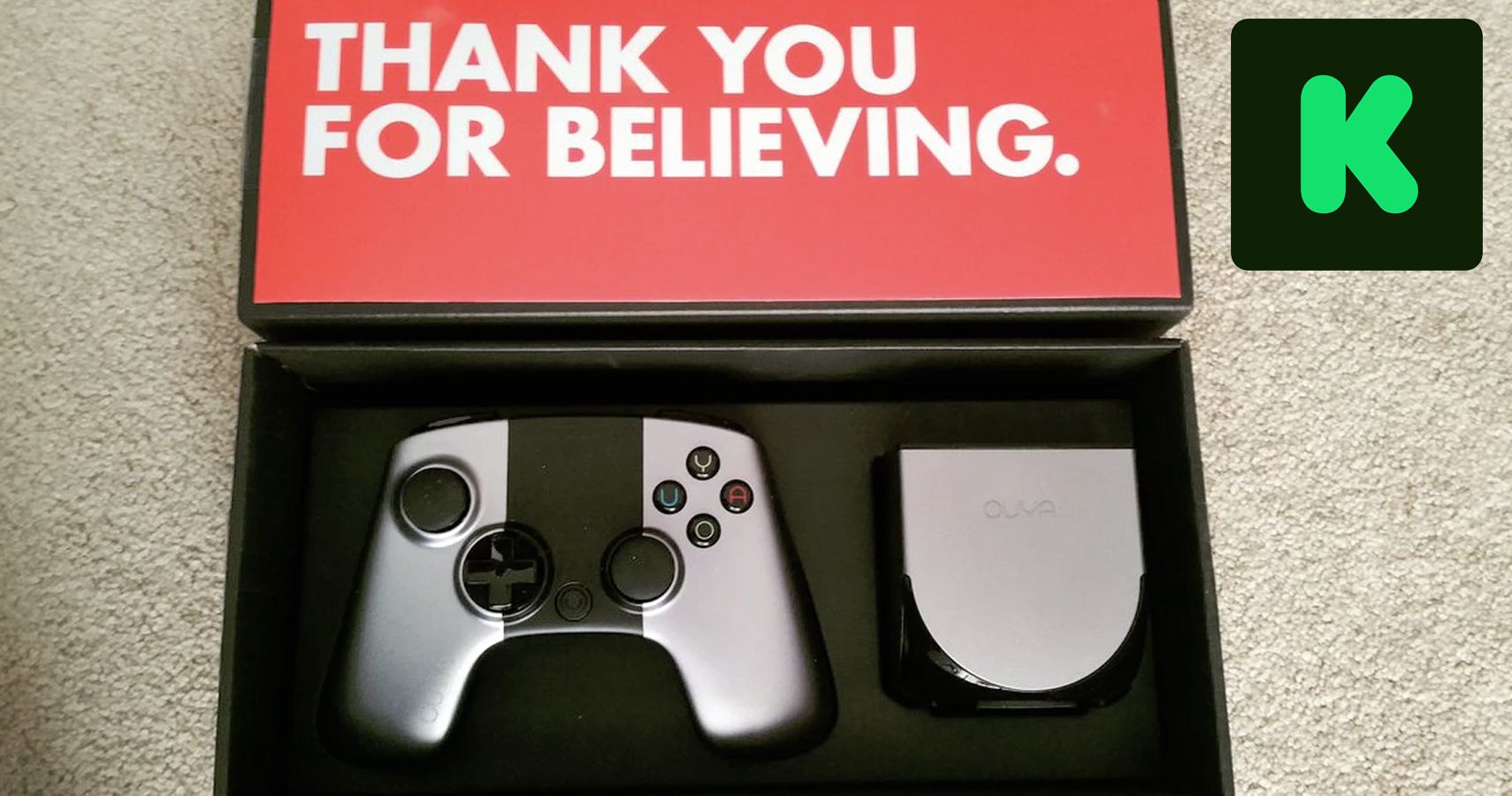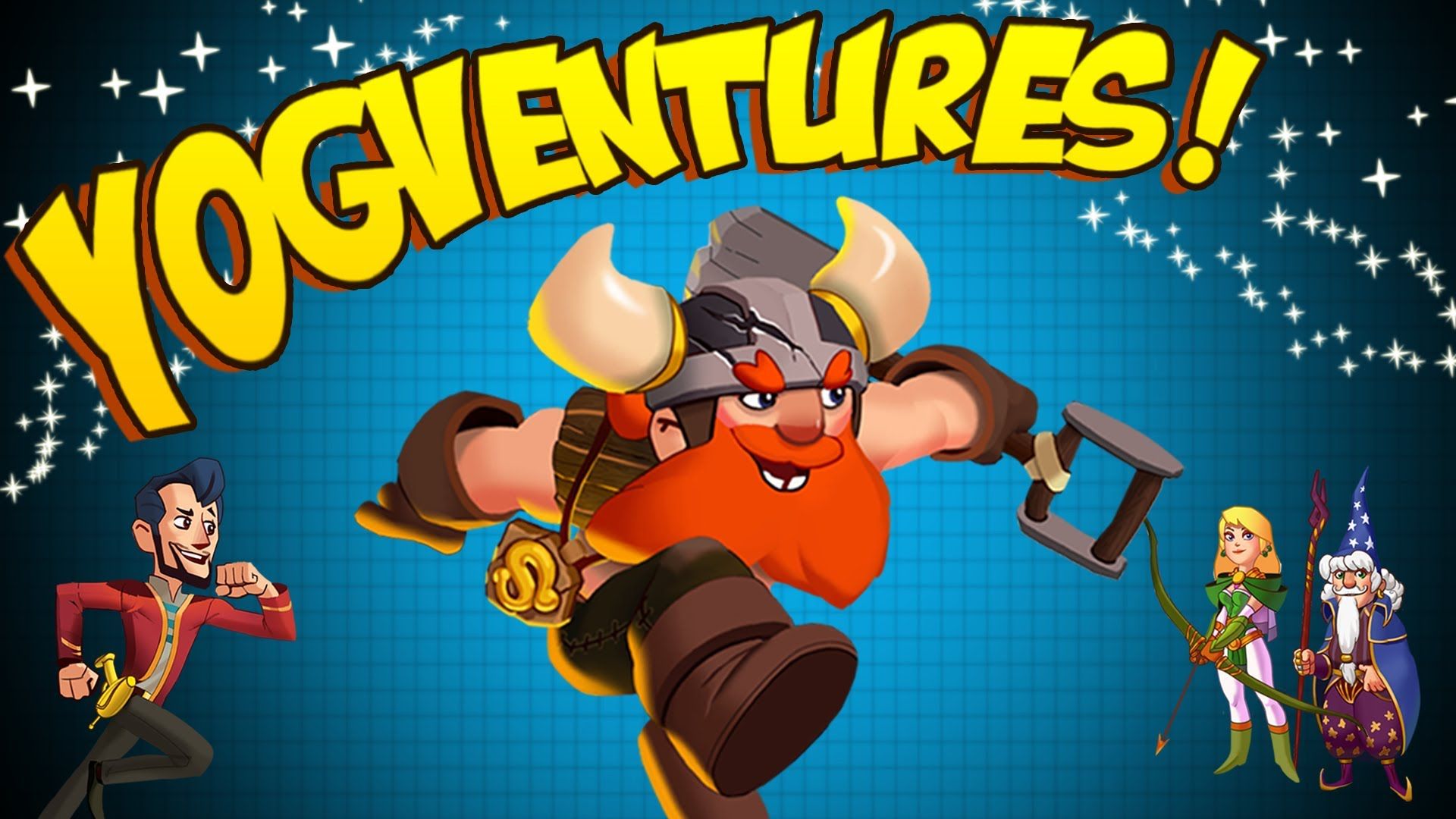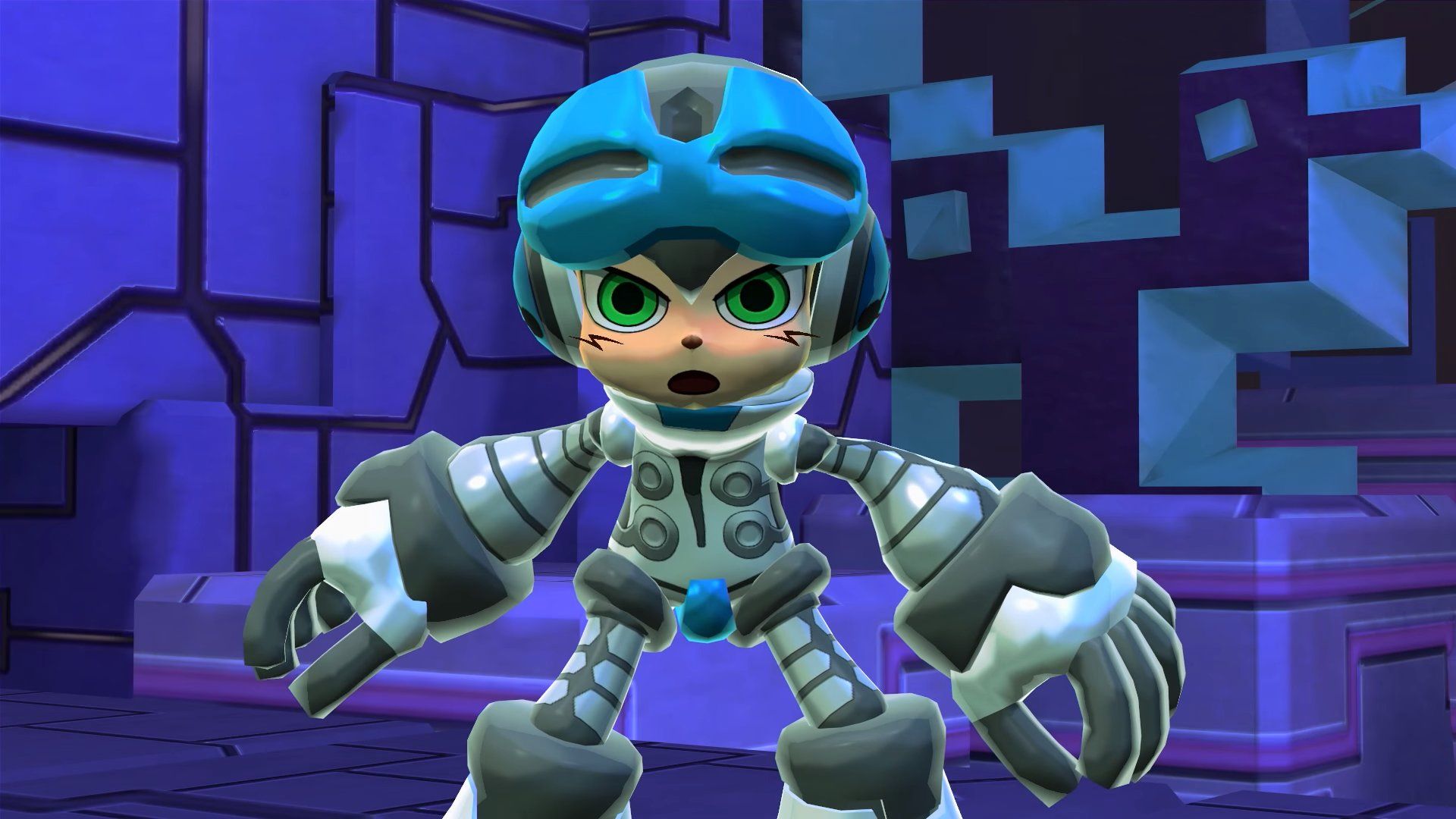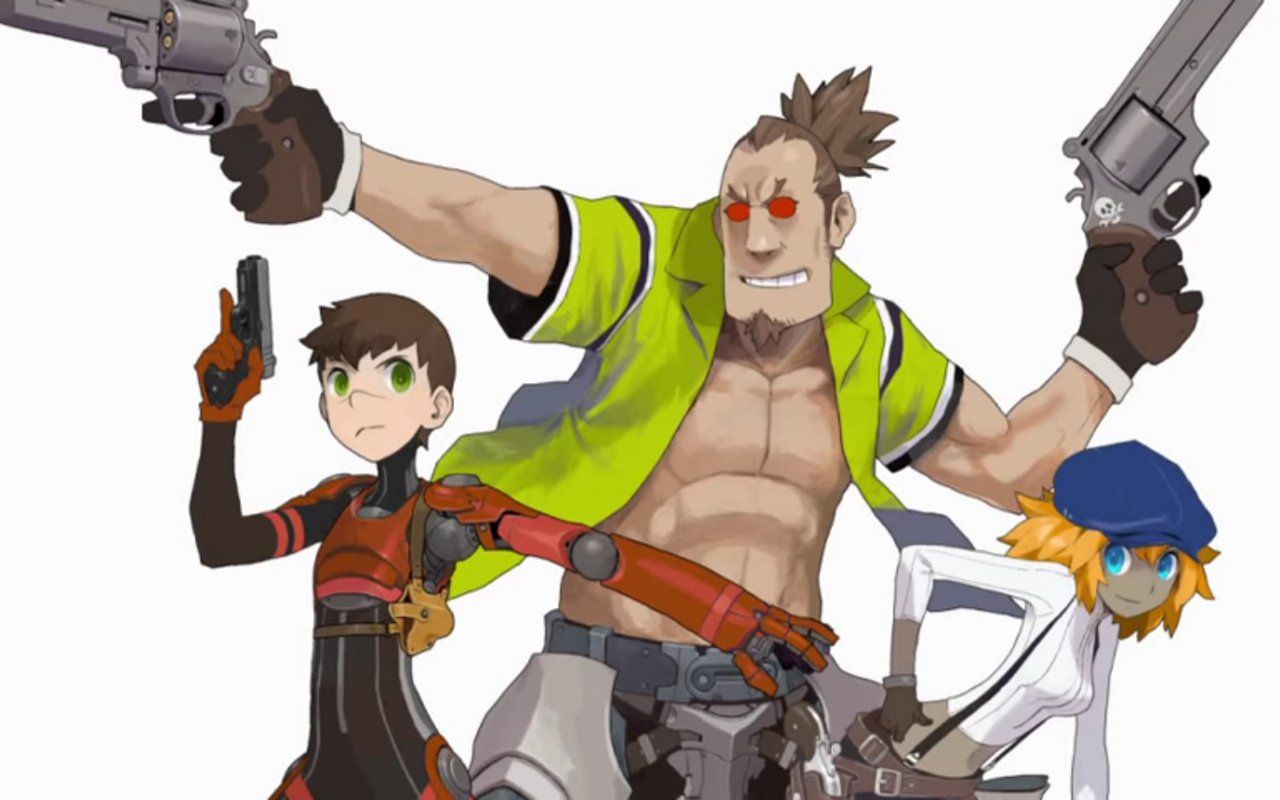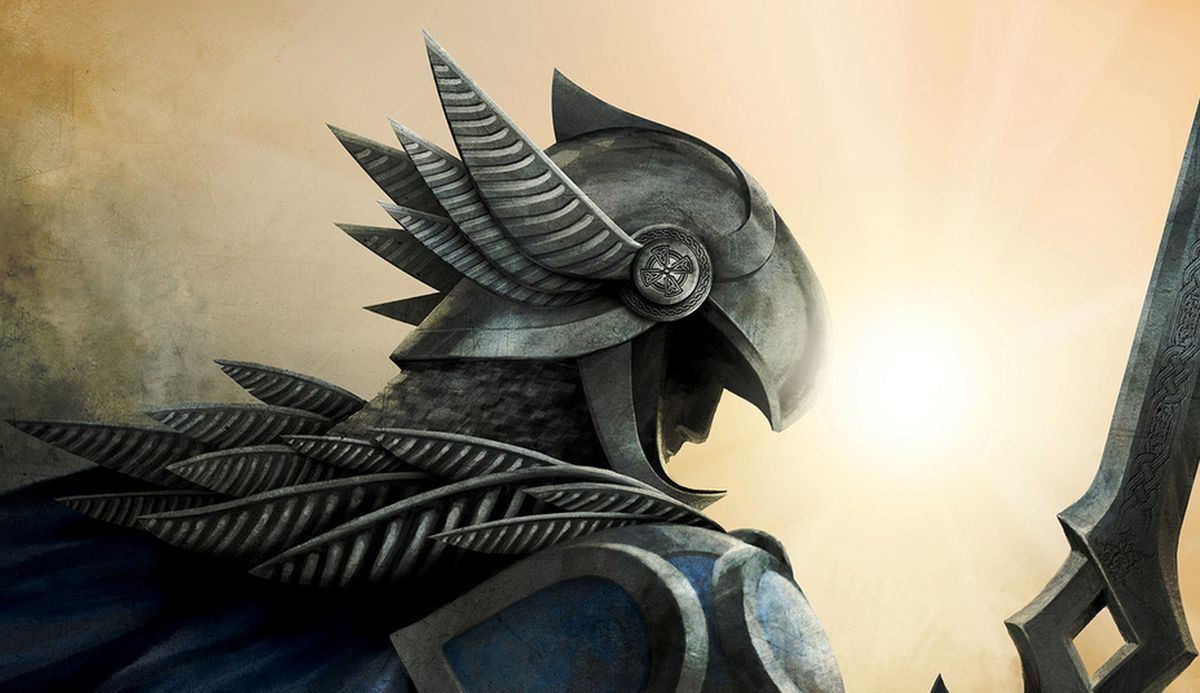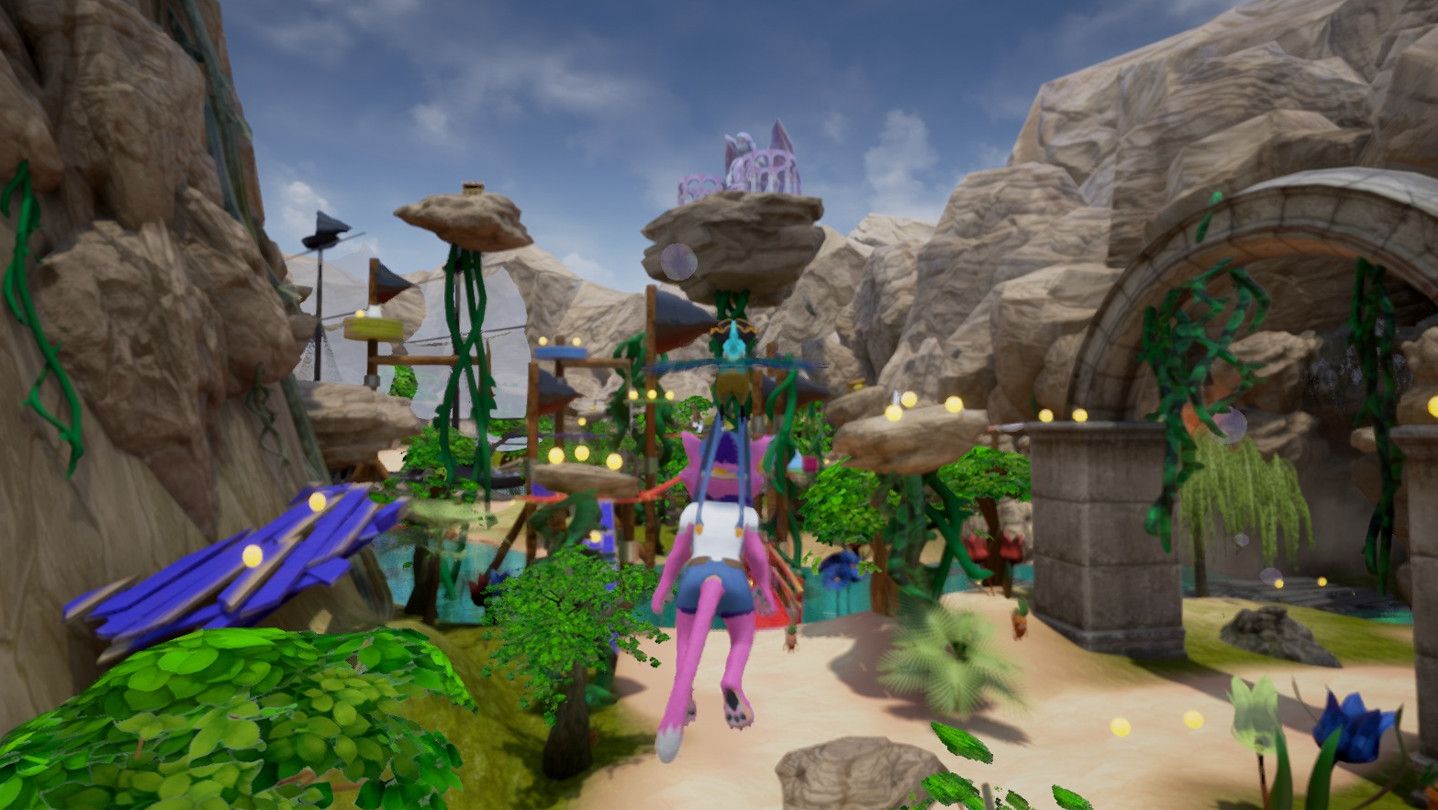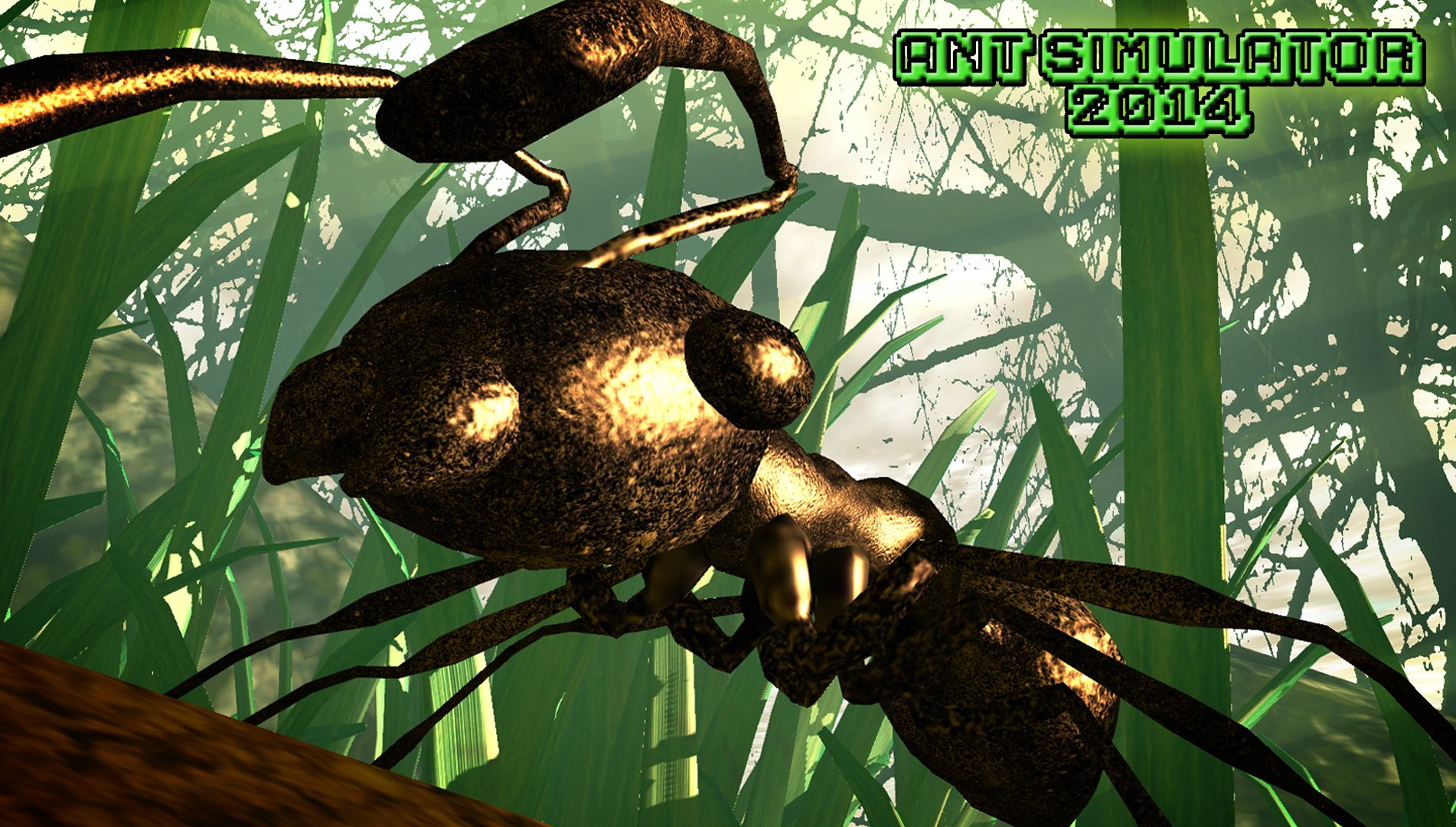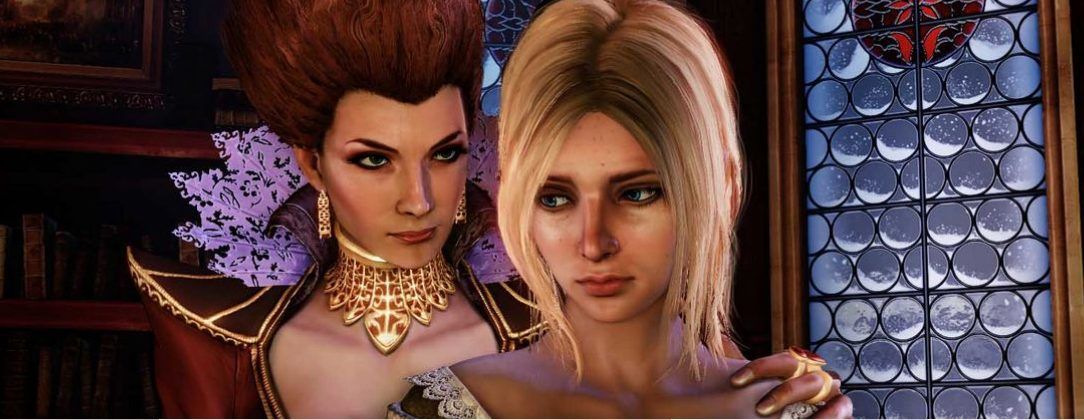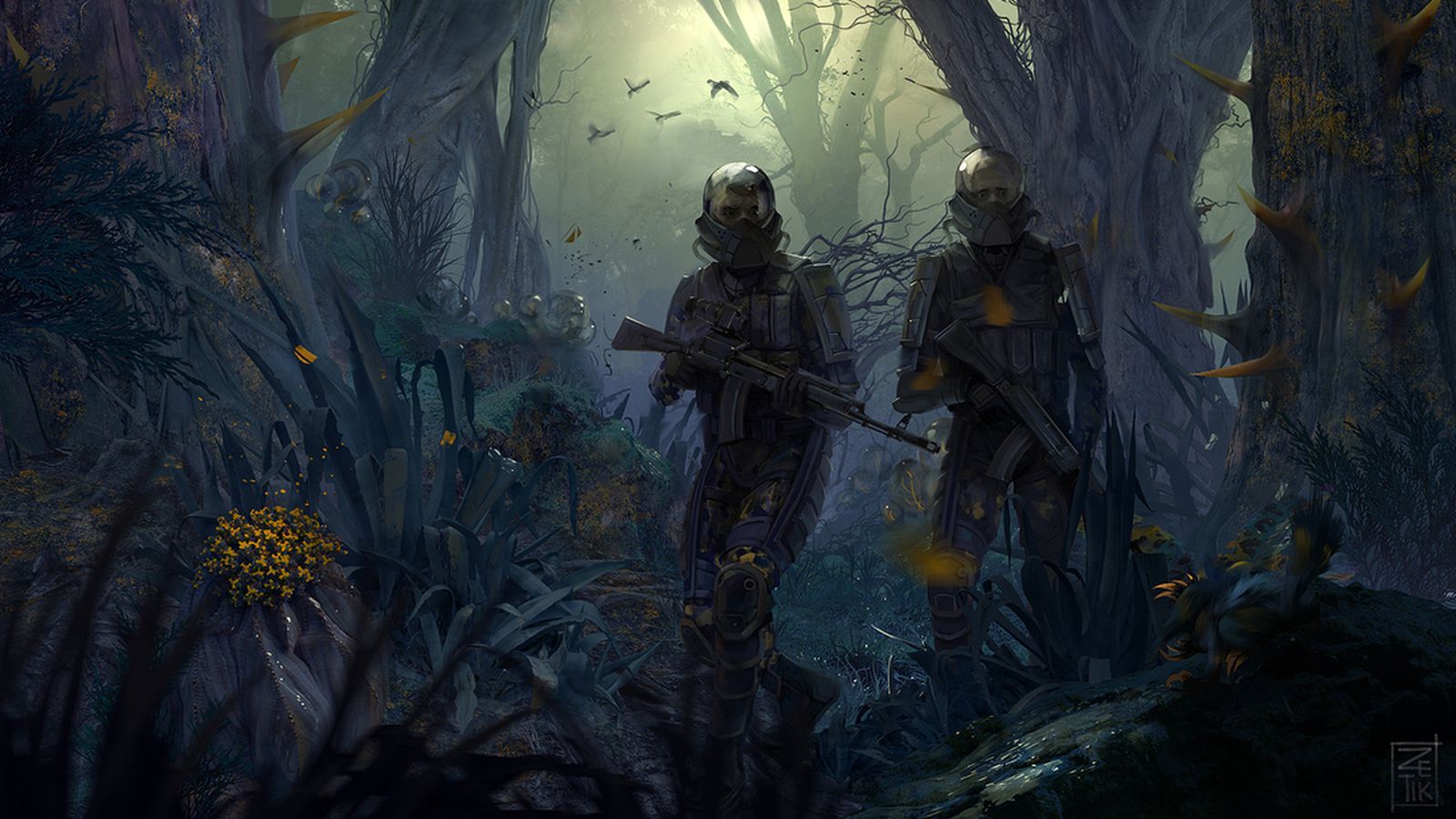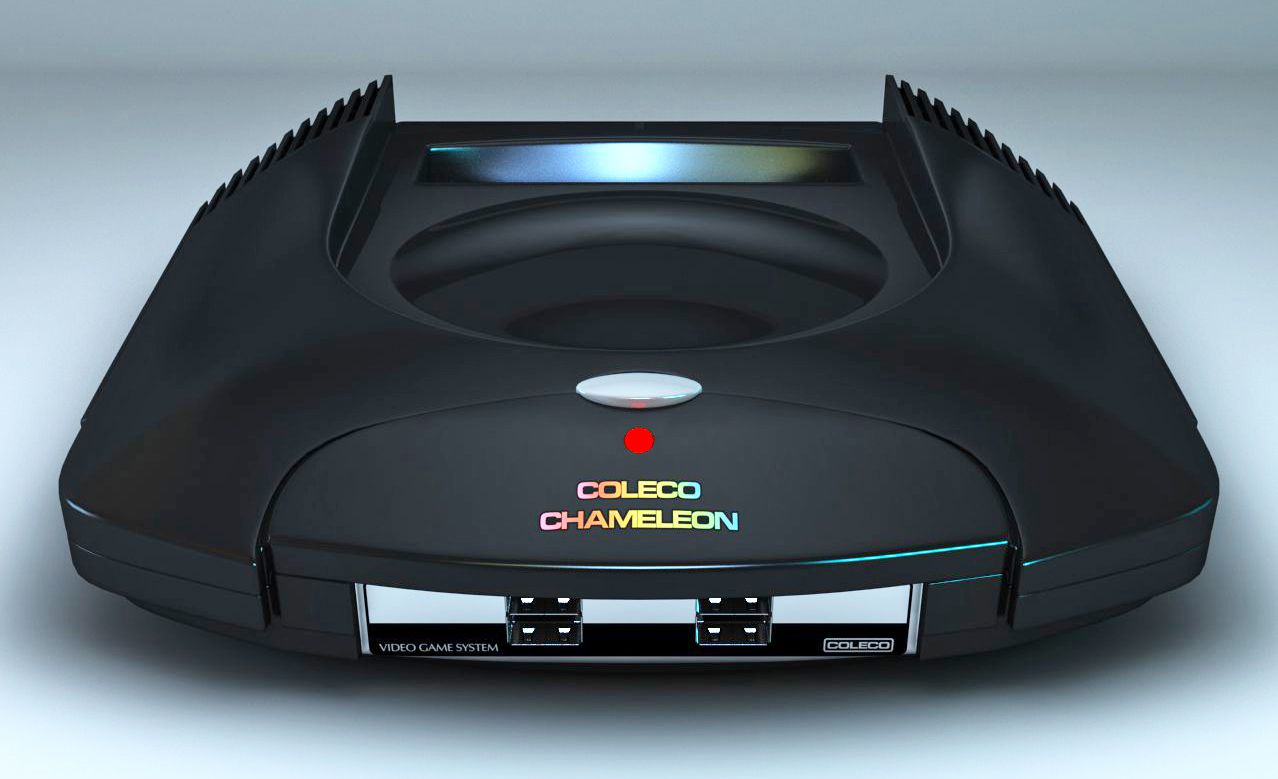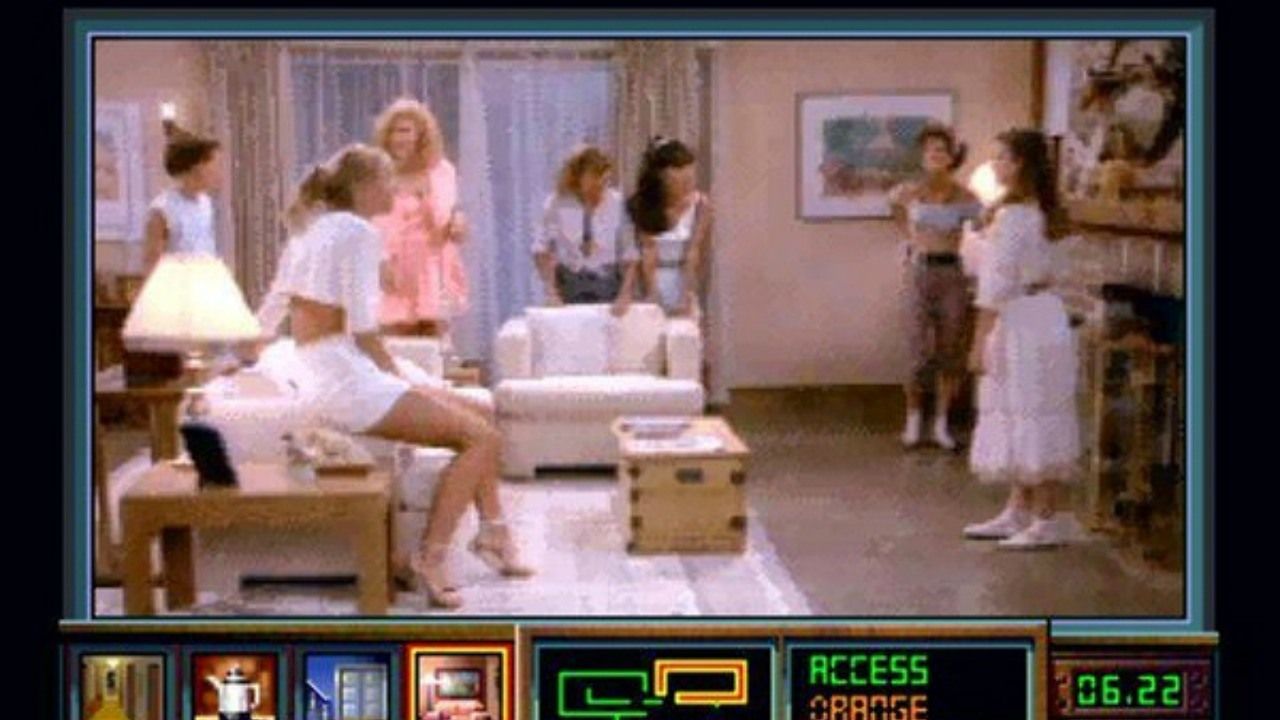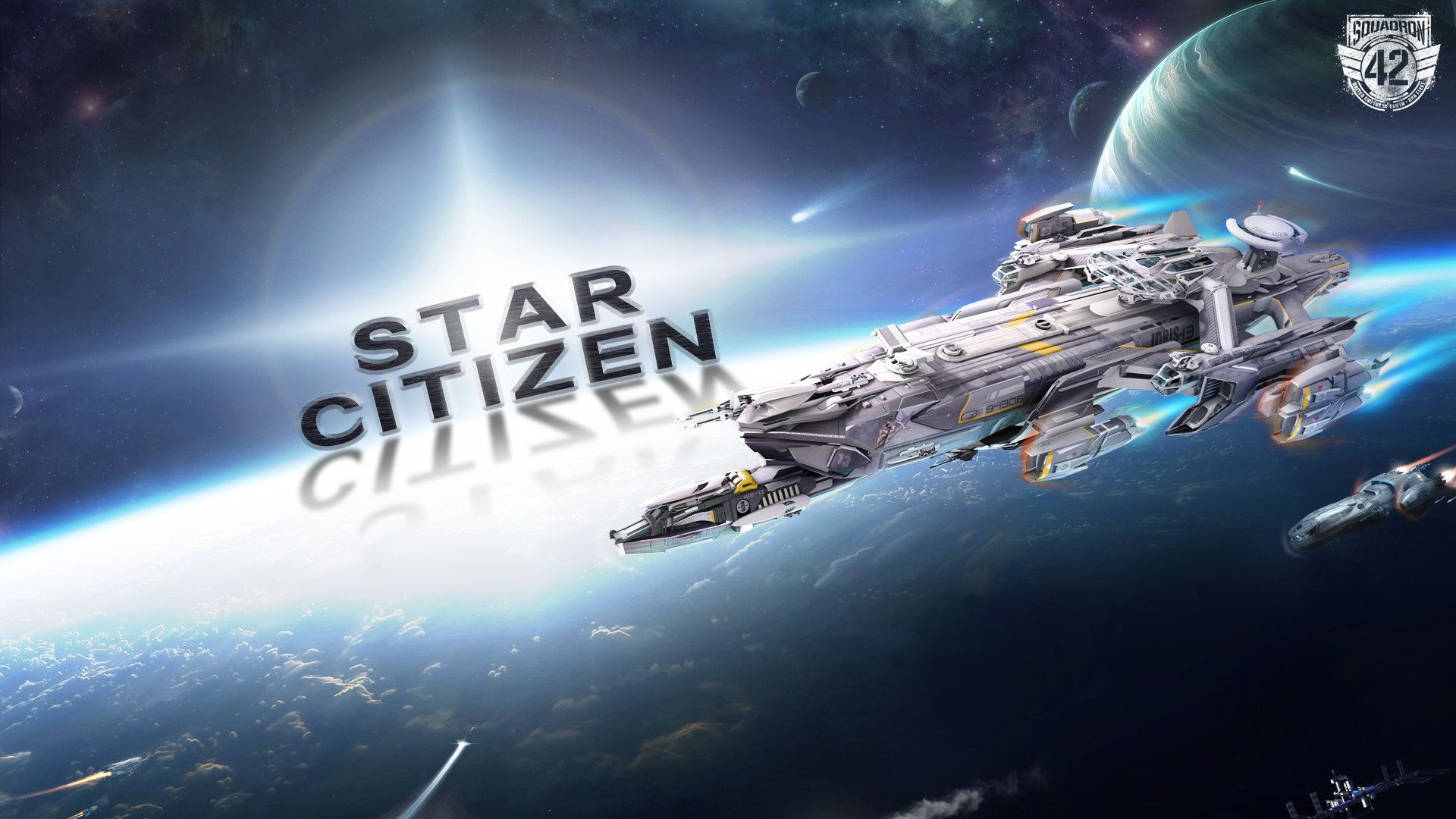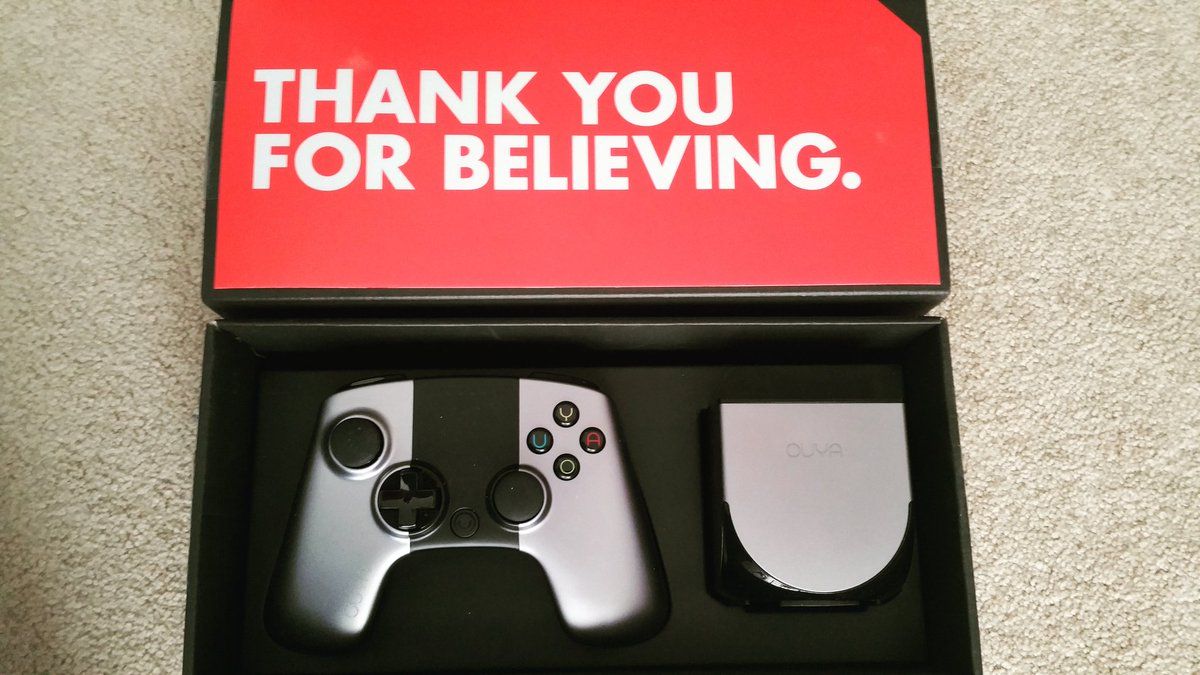Kickstarter is a blessing and a curse. The crowdfunded website is the perfect platform for developers - new and old - to make their dream game a reality. We’ve seen video games too niche for mainstream audiences reach unimaginable levels of success, thanks to the emotional and financial support of gamers.
If not for the fond memories of point-and-click adventure games by Tim Schafer, the former LucasArts developer would have never been able to raise over $3.45 million for Broken Age, an adventure game inspired by his heyday at LucasArts. If not for the love of the Mega Man franchise, the critically acclaimed Shovel Knight would have never seen the light of day, without fans pledging $300,000 for development. And when famed Konami producer Koji Igarashi launched a Kickstarter to make a new Castlevania inspired game called Bloodstained, fans eager to see the 2D legacy continue raised over $5 million to make it happen.
However, not every Kickstarter is a dream come true. There are times when a game is hit with an unexpected delay, graphical downgrade, or unexpected development cost. Sometimes these games are able to carry on; other times these games get the axe. Kickstarter puts the public in the role of a video game publisher and that scenario isn’t always rosy. When you fund a game on Kickstarter, you’re taking a chance that the developer you just entrusted your money to - whether is five dollars, $100, or $1K - isn't capable of developing his game. Kickstarter is not a store. If it fails, it fails.
Unfortunately, the early days of Kickstarter saw developers and backers blindsided by the hype and falling prey to pitfalls too big to endure. Here are the 15 Biggest Kickstarter Fails in video games.
15 Yogventures
Back in 2012, the popular YouTube gaming channel known as The Yogcast announced it was entering the Kickstarter ring with a pricey video game proposal of its own. No longer satisfied with playing endless hours of Minecraft for its seven million subscribers, The Yogcast were going to star in an open-world video game of their own. Titled Yogventures, the open-world sandbox game promised adventure, random-generating worlds, crafting, character customization, and Jaffa Cakes galore.
Sounds incredible, right? Yogcast fans poured over $567,000 into the Yogventures Kickstarter, just to play a game based on their favorite YouTubers. Unfortunately, whenever something sounds too good to be true, it usually is.
Yogventures promised more than what first-time developer (red flag) Winterkewl Games could deliver. The indie developer missed deadlines, turned in disappointing work, underestimated development cost, and lost a key artist early in development, along with the $35,000 used to hire him. That last incident caused Yogcast to lose complete confidence in Winterkewl Games altogether.
Despite Winterkewl founder Kris Vale investing $25,000 of his own money into the game and sacrificing his own marriage in the process, development of Yogventures came to a halt in 2014. Yogcast apologized to their backers and tried to make amends by offering them a copy of TUG, an open-world survival game that was also crowdfunded on Kickstarter. According to Yogcast, TUG was "the game we were hoping Winterkewl Games would make."
14 Project Phoenix
On paper, a real-time strategy RPG that mashes together the best elements of JRPGS and WRPGS sounds like a match made in heaven. That was the sales pitch for Project Phoenix, a squad-based strategy game being developed by "some of the greatest creative talents in the video game industry." Developers that worked on games like Final Fantasy, The Elder Scrolls: Skyrim, Diablo III, and more. What sealed the deal for most gamers was seeing legendary Final Fantasy composer Nobuo Uematsu listed in the game's credits.
The Kickstarter campaign for Project Phoenix raised over $1,000,000 in 2013 and had a release date for March 2015. It's the year 2017 and there's no solid release date for Project Phoenix in sight.
What happened? A 2015 update revealed the ugly truth. The Project Phoenix team were waiting on a specific programmer - gameplay programmer David Clark (Ori and the Blind Forrest) - to help them make their 60-hour RPG into a reality. Clark never came and that crippled development on the game. Much of Project Phoenix's development revolved around Clark's involvement. Without Clark, the developers now have to rethink their production, such as hiring more programmers than intended, moving to a new developer-friendly game engine, creating new assets, and finding new ventures to pay for these unforeseen costs. An update posted in April suggest the Project Phoenix developers are pinning their hopes on smaller unnamed productions to help them raise the money needed to finish their Kickstarter game.
13 The Mighty No. 9
Mega Man fans have it rough these days. Capcom abandoned the Blue Bomber. The only new Mega Man games being made today are endless ports of the NES games. This is why when news broke out in 2013 that Keiji Inafune - the co-designer of the Mega Man franchise - was launching a Kickstarter for a spiritual successor to Mega Man, gamers everywhere jumped for joy. Inafune's game was called Mighty No. 9 and it promised to embody all the 2D platforming action of the Mega Man series, while also evolving it for a whole new generation.
Donating to the Mighty No. 9 Kickstarter wasn't just seen as a way of saving Mega Man from obscurity; it was seen as the perfect opportunity to stick it to Capcom. With enthusiasm unbelievably high, the Mighty No. 9 Kickstarter raised over $4 million in cold hard cash. The tremendous success of Mighty No. 9 was seen as a victory for Mega Man fans and gamers everywhere. Sadly, the dream-like experience turned into a nightmare.
Throughout its unexpected three-year development, Mighty No. 9 was plagued with controversy. Poor communication between the developers and backers, new crowdfunded campaigns for additional game content like English voice acting and DLC, an apparent graphical downgrade with every new piece of footage, and delay after delay after delay. Inafune launching another Mega Man inspired Kickstarter before Mighty No. 9 was finished didn't sit well with many backers either (we'll talk more about this one in a minute).
What soured everyone's opinion about Mighty No. 9 the most was its tone-deaf marketing. “Make the bad guys cry like an anime fan on prom night.” Yup. That's the line you want to use when selling your anime-looking game to a demographic made up of anime fans. Ugh.
Mighty No. 9 was no longer the beacon of hope; it became a symbol for everything wrong with the gaming industry. When Mighty No. 9 was finally released, it failed to be anything more than a poor man's Mega Man.
12 Red Ash
In the midst of the Mighty No. 9 disaster, Inafune believed the timing was just right to launch another nostalgia-fueled Kickstarter. Pitched as a sci-fi anime-ish adventure game, Red Ash was intended to be a successor to the Mega Man Legends series, as Mighty No. 9 tried (and failed) to do for the original Mega Man games. Red Ash wasn't just going to be a video game, Red Ash was a multi-media franchise in the making. An animated series produced by Studio 4C - an acclaimed animation studio in Japan - was also in the works, but also needed funding.
In any normal situation, both Kickstarter campaigns for Red Ash could have set new records for Inafune and the crowdfunded site. However, these campaigns were happening right after the gaming public had lost confidence in Inafune after his poor mismanagement of Mighty No. 9. In 2015, the Red Ash video game Kickstarter failed to reach its $800,000 goal, while the anime Kickstarter just squeaked by with a little over $160,000.
The Red Ash video game Kickstarter didn't just fail for its association with Mighty No. 9. It had blunders of its own. No one knew if funding for Red Ash was going towards a full-fledged game, or for a first-half of an episodic series. Red Ash was coming to consoles, but the Kickstarter didn't make it clear if it was for PS4, Xbox One, or even Wii U. Finally, the Red Ash pre-alpha build was anything but spectacular.
Red Ash failed, but not really, as a mysterious Chinese-based company named FUZE swooped in last minute and provided their publishing services. FUZE - best known for producing a bootleg gaming console that looked like the love child of a PS4 and Xbox One - saved the game. Aren't happy endings great... except for the fact that little has been heard Red Ash since its Kickstarter ended.
11 Unsung Story
You may have noticed a pattern emerging as you read these Kickstarter horror stories. Famous game designer launches Kickstarter to make a game based on their most famous work. Fans of said game designer pledge every penny they have to see a new installment of their favorite game. Famous game designer bites off more than he can chew and the fans are left to suffer.
This pattern unfortunately continues in the video game Kickstarter for Unsung Story, a tactical RPG by former Square Enix director Yasumi Matsuno. Unsung Story was going to follow in the footsteps of Final Fantasy Tactics and Vagrant Story - two of Matsuno's most famous games - and deliver a satisfying single-player role-playing experience. The developer behind Unsung Story was Playdeck, a company composed of former Square Enix superstars. Sounds like a dream come true. What could go wrong? Everything.
Unsung Story ended its 2014 Kickstarter with over $660,000 and promised the game would ship by the end of 2015. In 2016, Playdeck halted development on the game, but are now back to work on an alpha build.
The usual suspects are here. Poor communication between the company and backers, lack of updates, underwhelming progress and more. What seriously soured backers on Unsung Story, however, was the game sudden focus on PVP multiplayer. Why did this tick them off? Because PVP multiplayer was never mentioned in the game's sales pitch. There's no telling when Unsung Story will be released, but fans aren't thrilled that they're not getting the game they were originally promised.
10 Fur Fun
Where do you cross the line between inspiration and plagiarism? A game stealing assets from other video games would be a good place to start. That's the controversy surrounding Fur Fun, a 90s inspired 3D platformer that's more bootleg than homage.
It all began back in late 2016, when Spanish developer DokyCamp launched its Kickstarter campaign for the game. At the time, Fur Fun wasn't called Fur Fun, but Kewpie-Jazzy and it was asking potential backers to help pledge for a new 3D platformer in the style of Banjo-Kazooie and Donkey Kong 64, with its Kickstarter page mimicking Yooka-Laylee's. The game did not look visually impressive and as a result failed to meet its Kickstarter goal, however, Kewpie-Jazzy found new life on Steam Early Access under its new name Fur Fun.
Following the Steam launch, many users began to notice uncanny similarities between Fur Fun and the games that inspired its creation. Sound files from the N64 game Banjo-Kazooie were found within the game.
Most damaging for Fur Fun is that one of its levels bears (no pun intended) a strong resemblance to the Xbox 360 inspired world, LOGBOX 720, in Banjo-Kazooie: Nuts & Bolts.
Coincidence? ... Unlikely.
9 Ant Simulator
Dealing with a fallout among friends is never easy, especially if you're an indie game developer. The rise and fall of Ant Simulator, a 48-hour game jam idea that appeared to be blossoming into a full game in 2014, is the perfect example of this. Crowdfunding for Ant Simulator's development was raised through various channels - one source being the “Ultimate Gamedev Tutorials" Kickstarter that featured the making of the game. However, development would soon come to a close.
What happened? According to developer Eric Tereshinski, his business partners at ETeeski were negligent in spending Ant Simulator's crowdfunded budget. He accused his former business partners and friends, Tyler Monce and Devon Staley, of wasting the money on booze and strippers.
When Game Informer asked to get their side of the story, Monce and Staley denied the accusations and pointed the blame back to Tereshinski.
Regardless of who's telling the truth, Ant Simulator will never see the light of day.
8 Shadow Of The Eternals
Among the great games in the Nintendo GameCube's library, Eternal Darkness is often described by many gamers as one of the console's hidden gems. It was an M-rated horror game that brought back fond memories of the Resident Evil series, while captivating players with its sanity meter that manipulated the game's environment with creepy results. Unsurprisingly, with Eternal Darkness being an exclusive adult-oriented game on a Nintendo console, the game became a commercial failure.
In 2013, the developers behind Eternal Darkness launched a Kickstarter for its spiritual successor named Shadow of the Eternals. A new game following in the footsteps of Eternal Darkness seemed like an easy win for funding, however, the Kickstarter failed to come close to its goal of $1.35 million. Then, the second relaunched Kickstarter failed to reach its reduced goal. And the final attempt at funding the game failed as well. Ouch.
How could Shadow of the Eternal fail so many times when it promised to continue to the horrific fun of Eternal Darkness; the game everyone claimed to love? That's because the developers behind both games were surrounded by controversy throughout the years. Denis Dyack, former president of Silicon Knights and chief creative officer at Precursor Games, to be more specific.
Dyack became a controversial figure after a Kotaku report suggested he diverted resources from X-Men: Destiny - Silicon Knight's critically-panned Marvel game for Activision - and into a demo for Eternal Darkness 2. His leadership was also described as disconnected and "dictatorship." It took several months before Dyack denied these explosive allegations, but the damage was already done.
Another significant event that killed Shadow of the Eternals was Kenneth McCulloch, a founding developer of Precursor Games, being arrested on charges of 'adult' child imagery. Momentum for the game never recovered.
7 Areal
The open post-apocalyptic adventure, Areal, found crowdfunding success on Kickstarter, but had it snatched away after damning allegations surfaced about the people behind the game. Developed by former developers of the S.T.A.L.K.E.R. games, West Games were hoping Areal would be a continuation of their famed survival horror series. However, their Kickstarter for the game was suspended after the team raised $65,000 of its $50,000 fundraising goal.
Why did Kickstarter suspend Areal? Kickstarter never publicly said why, but the company said it reserves the right to do so if "if campaigns misrepresent or fail to disclose relevant facts about the project or its creator, provide inaccurate or incomplete user information, or misrepresent support by pledging to their own project." That's quite the damaging innuendo.
There were a couple of red flags raised during the Kickstarter for Areal. Most of the game's concept art and footage came from the S.T.A.L.K.E.R. series, the modest fundraising goal seemed insufficient for such an ambitious game launching on multiple next-gen consoles, other developers that formerly worked at GSC Game World, the studio behind S.T.A.L.K.E.R., questioned West Games' contribution to the franchise, and development updates were far too sparse.
West Games has denied any claims of wrongdoing and says it will continue fundraising Areal on its own website. Out of everything, the strangest aspect of the Areal Kickstarter was the developer's claim that Russian president Vladimir Putin was hankering for a copy of the game. Perhaps our Commander in Chief can snag him a copy.
6 Coleco Chameleon
New gaming consoles are a dime a dozen, but who wouldn't want to pay $300 for a system that played nothing but old-school video games? That was the gamble with the Retro VGS. When the system's IndieGoGo page launched in 2015, the team behind the Retro VGS asked hardcore gamers to pony up nearly $2,000,000 for creating such a device. A lack of a working prototype and inconsistent hardware specs doomed the Retro VGS, but that wouldn't be the end of the console.
In January of 2016, the Retro VGS was reborn as the Coleco Chameleon. The Retro VGS team were collaborating with Coleco; using their popular brand name to give new life to their retro console. The Coleco Chameleon picked the New York Toy Fair as the venue for its public debut. Making a big splash there would ensure the Coleco Chameleon would have a successful Kickstarter run.
When the Coleco Chameleon showed up at the New York Toy Fair, onlookers noticed something off about the console. The console's back and game cartridge were covered by black electrical tape, and Super Nintendo controllers were used for its demo. The answer for its strange appearance: the Coleco Chameleon was nothing more than a SNES in a jaguar shell.
The Coleco Chameleon team were never able to refute the claim that they had no working prototype for the system, resulting in Coleco ended their relationship with the retro makers. Needless to say, the Coleco Chameleon Kickstarter never launched.
5 Night Trap Revamped
A common problem we're seeing with these ambitious Kickstarter campaigns are developers underestimating the financial cost of production, such as funding development for multiple platforms and covering any unforeseen problems that might occur. So, you can't blame the skeptics that viewed the 2014 Kickstarter for Night Trap Revamped - a proposed remake of the controversial Sega CD game featuring scantily-clad girls and vampires (yes, vampires) - with doubt.
The developers behind the game were asking for mere $330,000 to ship the campy horror game on the Xbox and PlayStation. No distinction was made whatsoever on the Kickstarter page if the developers meant Xbox One and PS4, or Xbox 360 and PS3. Some of the claims being made on the Night Trap Revamped Kickstarter were also inaccurate, like promising the console versions of the game being shipped with paper sleeves. According to Frank Cifaldi, that practice isn't allowed by Sony or Microsoft.
Lastly, there was the bizarre phone conversation between Kotaku reporter Nathan Grayson and Tom Zito - the executive producer of Night Trap Revamped - where Zito didn't address any of the serious concerns over the Kickstarter and abruptly ended the interview as soon as Grayson showed him the questions being asked on Twitter.
Night Trap Revamped failed to reach its Kickstarter goal, but worry not FMV lovers, a 25th-anniversary re-release of the game is coming soon to PS4 and Xbox One, thanks to Limited Run Games.
4 Bear Simulator
Nobody enjoys being criticized for doing something that they love. Video game criticism, in particular, has taken a nasty turn in recent years, as social media has made it easier to blast out hate and aim it directly at the developers. In the case of Bear Simulator, a successful Kickstarter game that was funded in 2014, it wasn't waves of ongoing hate that drove developer John Farjay away from his game, but a negative video from YouTube's biggest star.
While most of the Kickstarter games covered here were either canceled or released to jeers, Bear Simulator actually shipped out in 2016 and received favorable reviews on Steam. That's not to say Bear Simulator was without flaws, but overall players were happy they could finally experience the daily life of a bear as promised.
One buyer that wasn't happy, however, was famous YouTuber Felix “Pewdiepie” Kjellberg, who has over 55 million subscribers on his gaming channel.
PewDiePie's Let's Play of Bear Simulator ended with the YouTube star flipping off the developer, after Steam refunded his purchase. Farjay took PewDiePie's video personally and later released an update saying he was giving up on Bear Simulator.
The video was made private after Farjay's depressing comments, but PewDiePie later made it available again to the public, as he thought it looked like an admission of guilt.
Recent updates on the game's Kickstarter page suggest Farjay has changed his mind about abandoning Bear Simulator, as he's working on patches and a new campaign for the game.
3 Godus
No one will ever dispute Peter Molyneux as a talented video game designer. He's the mastermind behind acclaimed games like Dungeon Keeper, Black & White, and Fable. With that said, Molyneux's reputation as a truth teller is almost nonexistent. In the developer's own words, Molyneux has an unhealthy habit of "over-promising" on things he can't deliver. That's not a vice a Kickstarter creator should have, yet, in 2012, Molyneux and his development studio 22Cans launched a crowdfunded campaign for his God game simulator Godus.
Godus was the spiritual successor to Molyneux's earlier God game, Populous, and was planned for PC, Mac, mobile, and Linux. Molyneux had made ambitious games throughout his career before, but what made Godus stand out among the rest was that a single player would reign as a virtual God over others and even receive a portion of the game's revenue. That person would be Bryan Henderson, the winner of Molyneux's social experiment Curiosity – What's Inside the Cube? In 2013, Henderson managed to be the first person to finish Molyneux's puzzle game and appeared to be given a life-changing reward in the vein of Willy Wonka giving Charlie the keys to the Chocolate Factory.
Everything about Godus sounded too good to be true... and it was. Godus was no different from overhyped games of Molyneux's past. The Linux version of the game never came to be. The PC version of the game - originally stated of being the main priority of development - was constantly shafted by the freemium mobile version. The freemium game itself was criticized for its mediocrity and microtransaction-based gameplay.
As for Henderson, he never received his once-in-a-lifetime prize. Communication between Henderson and 22Cans died off quickly. While Henderson did receive a tour of the studio and was able to play an early version of the game, he was never made virtual God as promised, nor received any of the game's royalties. The problem is that Godus has yet to received its multiplayer HUB world due to lack of funds and it's becoming unlikely that the promised feature will ever be implemented.
A game bundle was even set up for Henderson by a third-party, as a way of giving him the reward he never received.
2 Star Citizen
Out of all the overly ambitious games mentioned in this list, Star Citizen might be the most ambitious Kickstarter project of them all. Chris Roberts, creator of the Wing Commander series, is certainly no stranger to ambitious games. In 2003, Robert released a sandbox space simulator called Freelancer for Microsoft Game Studios. While the game reviewed favorably, Freelancer's original vision of grandeur got shortchanged throughout its rocky game development. Star Citizen is Robert's attempt at creating the game Freelancer was meant to be, with the help of his development studio Cloud Imperium Games.
To say Star Citizen was a crowdfunded success would be an understatement. For the duration of its 2012 Kickstarter, Star Citizen raised over $2 million. Additional funds were also collected from the game's website. Backers were captivated by the game's promised features, like a single-player story influenced by the Wing Commander games, a multiplayer mode reminiscent of an MMO, an on-foot fps mode, and purchasing the latest and greatest spaceships on the virtual market.
What makes Star Citizen so fascinating and puzzling to read about is that fans have spent thousands of real life money on the fabbest of fake spaceships, found within this unreleased game. We're not talking about whaling on $5 rolls for high-ranking ships, like the kind you see in freemium mobile games. No. There are spaceships priced as high as $15,000! And people are spending that much for a game still in its alpha phase.
That's the problem with this game. Star Citizen feels like it will never leave development. It's original release date was 2014, then it got delayed to 2016, now, the game has a generic 2017 placeholder. With players already spending thousands of dollars on in-game items, based on the mere prospect of someday using them, one can't help but wonder if Cloud Imperium Games' is taking advantage of fans' enthusiasm of the game. Star Citizen's lengthy development has already led to one fan suing the developers, in order to be refunded for his Kickstarter donation of $2,5000.
With so much money riding on this game, it's not hard to imagine the situation turning ugly if Cloud Imperium Games can't deliver Star Citizen in one form or another to its backers. It would be a shame if those pimped-out ships went to waste.
1 Ouya
If there's one project that embodies the high hopes and disappointments of Kickstarter, it would be the Ouya. Currently ranked as the eighth largest project funded on Kickstarter, the Ouya managed to raise more than $8.6 million in 2012. The brainchild of this android-based device was Julie Uhrman, who pitched the system as an inexpensive gaming console that could play all your favorite mobile games on the TV.
Ouya was touted as an indie-friendly gaming console that would support free playable demos for every one of its games. Hackers could modify the Ouya without fear of legal repercussion. If you wanted to turn the Ouya into the ultimate emulator system, my God you could do it. Minecraft! The Ouya was going to have Minecraft!
So then, what happened to the Ouya anyway? As it turns out, the system was a garbage fire. Backers who received the Ouya were shocked to discover how poorly made and cheap-looking the console was. The buttons on the controller would stick. The D-Pad was stiff and unresponsive. And unbelievably, the $50 controller would wear out following a week of use. A more refined model was created following complaints, but was aimed at retail shoppers than those who backed the system.
The games... were pathetic. All the horrible shovelware mobile games were loud and present on the Ouya's sluggish store. Good indie games did exist on the Ouya, such as TowerFall or The Amazing Frog, but they were overshadowed by the worst games available on Android. They also didn't play very well on the Ouya either. No matter the model of your current phone, it would likely have better performance than the Ouya's outdated hardware. And with Sony, Nintendo, and Microsoft developing stronger relationships with indie game developers, there really was no reason to buy an Ouya for indie games.
For how slick and prominent the Ouya Kickstarter was, the company running the show turned out to be hilariously incompetent. In 2013, Ouya had the police on its tail when it decided to stage an E3 show on the parking lot of the Los Angeles convention. Ouya's $1M Free the Game Fund - intended to help development of Kickstarter games in return for exclusivity - got taken advantage of easily. The developers of Dungeons: The Eye of Draconus were open about gaming the system in their backers-only update, as they donated money into their own game, in order to meet the minimum amount required to receive funding from Ouya. They were also punished for it.
Despite its outrageous success on Kickstarter, the Ouya became a commercial failure. The company was sold to Razer in order to avoid financial debt. As for Uhrman, she signed off with this goodbye tweet: "OUYA was a once in a lifetime experience. Now, I'm off to find the next...stay tuned!"

